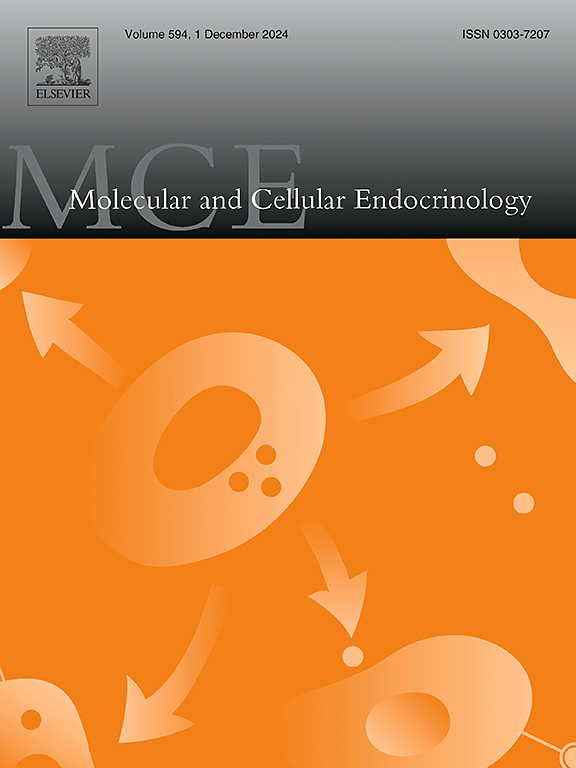双酚S慢性暴露损害胰腺功能并诱导雄性小鼠肥胖,与高脂肪饮食摄入无关
IF 3.6
3区 医学
Q2 CELL BIOLOGY
引用次数: 0
摘要
肥胖是一种慢性炎症性疾病,与多种合并症有关。双酚S (BPS)是一种内分泌干扰物,可能会影响胰腺和白色脂肪组织(WAT)的形态和代谢。本研究探讨了BPS单独或与高脂肪饮食(HF)一起对胰腺和附睾WAT (eWAT)形态的致肥作用。雄性C57BL/6小鼠(n = 12)分为标准饲料(SC)、标准饲料+ BPS (SCB)、HF日粮(HF)和HF日粮+ BPS (HFB) 4组。BPS暴露(25 μg/kg/天)通过饮用水持续12周。分析小鼠体质量、胰腺和eWAT重量、血浆参数、胰岛素抵抗、形态学、体视学、eWAT mRNA水平和内质网应激标志物蛋白表达。所有干预措施均增加了机体和组织质量、胰腺α-细胞和β-细胞、Pparγ mRNA水平、GRP78、ERO1和ATF4蛋白表达、附睾脂肪细胞大小以及胰岛素、葡萄糖和胆固醇水平。HF和HFB组也显示Grp78 mRNA水平、p-eIF2α和CHOP表达、胰岛直径、炎症浸润和三酰甘油水平升高。BPS联合HF饮食加重了胰岛素抵抗。这些发现表明,BPS具有致肥活性,即使在低剂量下也能影响代谢和重塑胰岛和eWAT,独立于HF饮食。本文章由计算机程序翻译,如有差异,请以英文原文为准。
Bisphenol S chronic exposure impairs pancreatic function and induces obesity in male mice independently of high-fat diet intake
Obesity is a chronic inflammatory disease linked to several comorbidities. Bisphenol S (BPS), a BPA substitute, is an endocrine disruptor that may impact pancreas and white adipose tissue (WAT) morphology and metabolism. This study investigated the obesogenic effects of BPS, alone or with a high-fat diet (HF), on pancreas and epididymal WAT (eWAT) morphology. Male C57BL/6 mice (n = 12) were divided into four groups: standard chow (SC), standard chow + BPS (SCB), HF diet (HF), and HF diet + BPS (HFB). BPS exposure (25 μg/kg/day) occurred via drinking water for 12 weeks. Body mass, pancreas and eWAT weights, plasma parameters, insulin resistance, morphometry, stereology, eWAT mRNA levels and protein expression of ER stress markers were analyzed. All interventions increased body and tissue masses, pancreatic α-cells and β-cells, Pparγ mRNA level, GRP78, ERO1 and ATF4 protein expression, epididymal adipocyte size, and insulin, glucose, and cholesterol levels. HF and HFB groups also showed increased Grp78 mRNA level, p-eIF2α and CHOP expression, pancreatic islet diameter, inflammatory infiltrate, and triacylglycerol levels. BPS combined with HF diet worsened insulin resistance. These findings suggest that BPS has obesogenic activity, affecting metabolism and remodeling pancreatic islets and eWAT, even at low doses, independently of a HF diet.
求助全文
通过发布文献求助,成功后即可免费获取论文全文。
去求助
来源期刊

Molecular and Cellular Endocrinology
医学-内分泌学与代谢
CiteScore
9.00
自引率
2.40%
发文量
174
审稿时长
42 days
期刊介绍:
Molecular and Cellular Endocrinology was established in 1974 to meet the demand for integrated publication on all aspects related to the genetic and biochemical effects, synthesis and secretions of extracellular signals (hormones, neurotransmitters, etc.) and to the understanding of cellular regulatory mechanisms involved in hormonal control.
 求助内容:
求助内容: 应助结果提醒方式:
应助结果提醒方式:


